


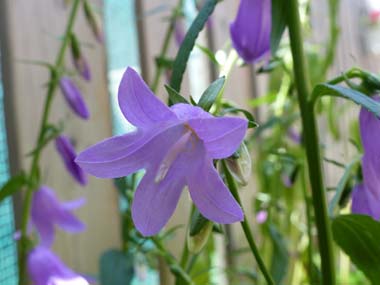
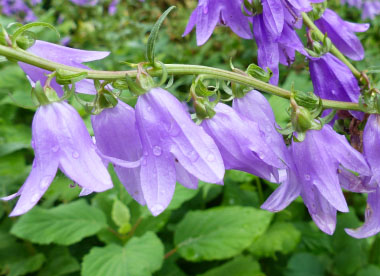
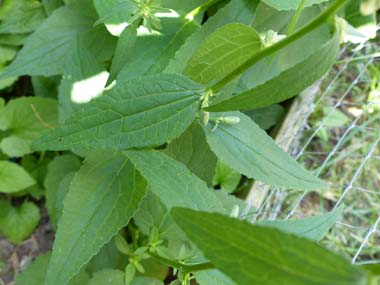

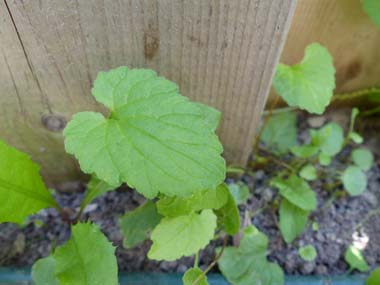
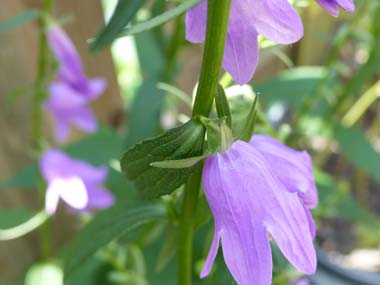
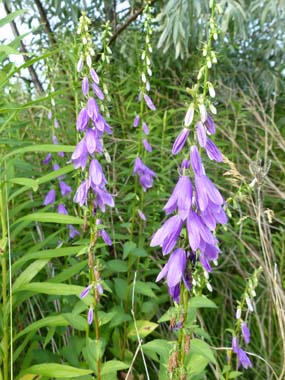
To support our efforts please browse our store (books with health benefits, etc.).
The harebell is a delicate perennial that has a graceful appearance. They have slender stems, sometimes in clusters and some are so weak the plant bends over. Interestingly an old name for this plant in Scotland was Witched Thimble due to old folklore. The genus name, from the Latin campana (bell), means little bell.
Distinguishing Features
The harebell is a relatively small plant and is most easily recognized by its small blue/lavender, drooping, bell-shaped flowers and the milky sap exuded by its stem. The most notable feature of the harebell is the flower. They either hang singly or they appear in clusters along the top parts of the stem.
Flowers
The radially symmetrical, nodding flowers of the harebell measure 2 to 3 cm in length. They have a rounded, fused corolla that opens into five pointed lobes. This blue or lavender bloom has a three-parted stigma, five stamens, and thin, green sepals. The flower typically blooms from late June to August.
 Fields
of Nutrition has medicinal benefits and vitamin/mineral content of Harebell.
Fields
of Nutrition has medicinal benefits and vitamin/mineral content of Harebell.
Leaves
The leaves of the harebell are about 7.5cm in length when full grown. Basal leaves, long-stalked, kidney-shaped–cordate, with rounded teeth, large-toothed, usually withered by flowering time. Stem leaves alternate, short-stalked, uppermost stalkless, almost linear, entire margins. One leaf per node.
Height
Harebells can range from 30cm to 60cm in height.
Habitat
This plant likes dry grassy areas and along the sunny edges of forests and moist to dry conditions. They also tend to like shallow rocky soil as well and along shorelines. They grow throughout Canada and the U.S. as well as Britain and other northern regions of the world.
Edible Parts
The leaves of this plant are edible and are best used in a salad. Add them to a smoothie, into your homemade dips or anywhere else to add some of its vitamin C.
Other Name
Bluebell bellflower.
Similar Plants
Peachleaf bellflower.
Winter Survival Food Handbook

PDF Plant Magazines
Types of Wild Food
Geographic Zones Seasons
Disclaimer
EdibleWildFood.com is informational in nature. While we strive to be 100% accurate, it is solely up to the reader to ensure proper plant identification. Some wild plants are poisonous or can have serious adverse health effects.
We are not health professionals, medical doctors, nor are we nutritionists. It is up to the reader to verify nutritional information and health benefits with qualified professionals for all edible plants listed in this web site. Please click here for more information.
Why Edible Wild Food?
- Food costs are rising
- Free, wild food is readily abundant
- Wild food adds nutrition to your diet
- Wild food can help treat various medical conditions





